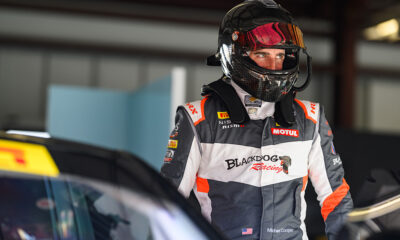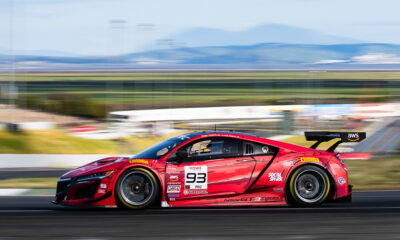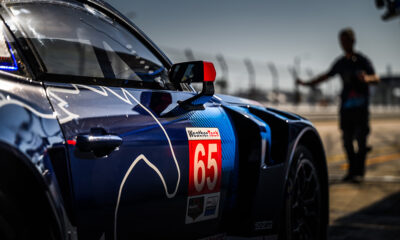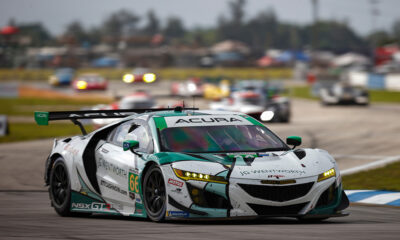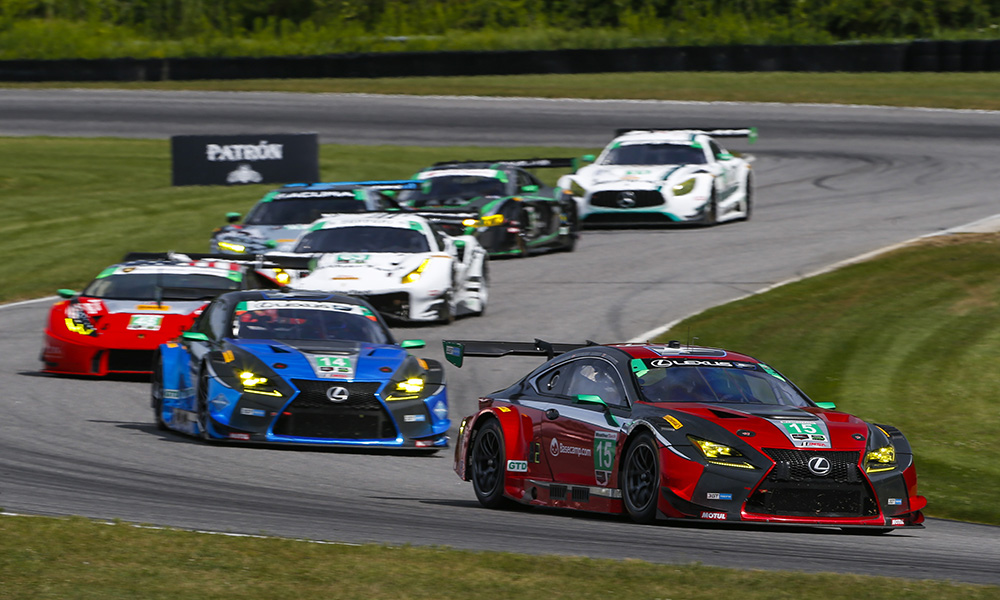
Photo: Jake Galstad/IMSA
Lime Rock, at 1.474 miles, is the shortest track that we will see during the IMSA WeatherTech SportsCar Championship. At 4.048 miles, Road America is the longest.
On its face there would seem to be very little that these two historic circuits have in common. However, they do share one similarity: small errors make a big difference in lap time.
Lap times at Lime Rock ranged from about 52.5 seconds to 55.5 seconds or more depending on the age of your tires.
In qualifying at Lime Rock, there was less than one second covering the entire GTD field, and about 0.500 seconds from first to ninth.
With only seven corners, your ability to make real improvement in lap time or to make up for a mistake is limited.
Adding to this is the nature of the circuit. The first three corners are tightly interconnected so a mistake in Turn 1 upsets your path through the rest of the complex.
Further, there are only two heavy brake zones which means it’s hard to push brake points deeper to make up for time lost in a previous corner.
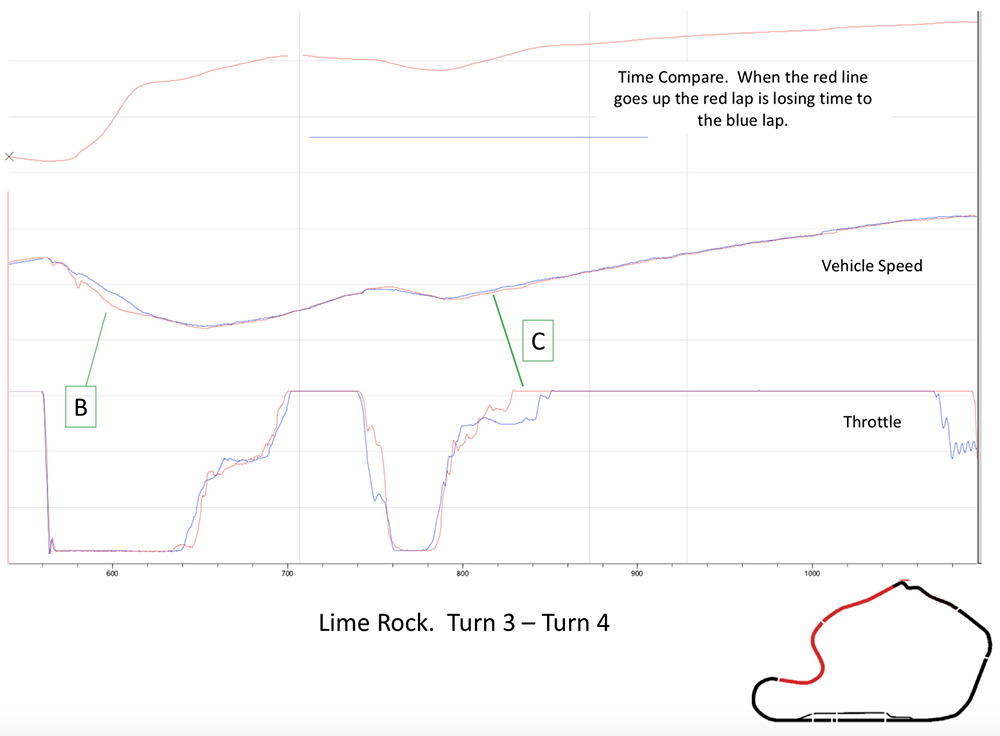
Road America has different characteristics, with long straights leading to big brake zones with a mix of low and high speed corners.
Part of the lap is a series of drag races. From the last corner to Turn 1, Turn 3 to Turn 5, and to a lesser extent, the run from the Carousel through the Kink into Canada corner.
Lap time at Road America is 127 seconds and 82 of those seconds (64.5%) are spent at full throttle.
Once they leave the corner, the driver is just along for the ride until he or she puts 250 pounds of force on the pedal in the middle to get the car slowed down.
If the driver is a bit late on power or exits the corner 2-3 mph slower than the car ahead, he or she will pay the penalty for a very long time.
Compared to Lime Rock we have the same pattern, small mistakes can’t be recovered from and will follow you for the entire lap.
To put this in perspective, we can review some on-board data from the Lime Rock event and the 2017 Road America round.
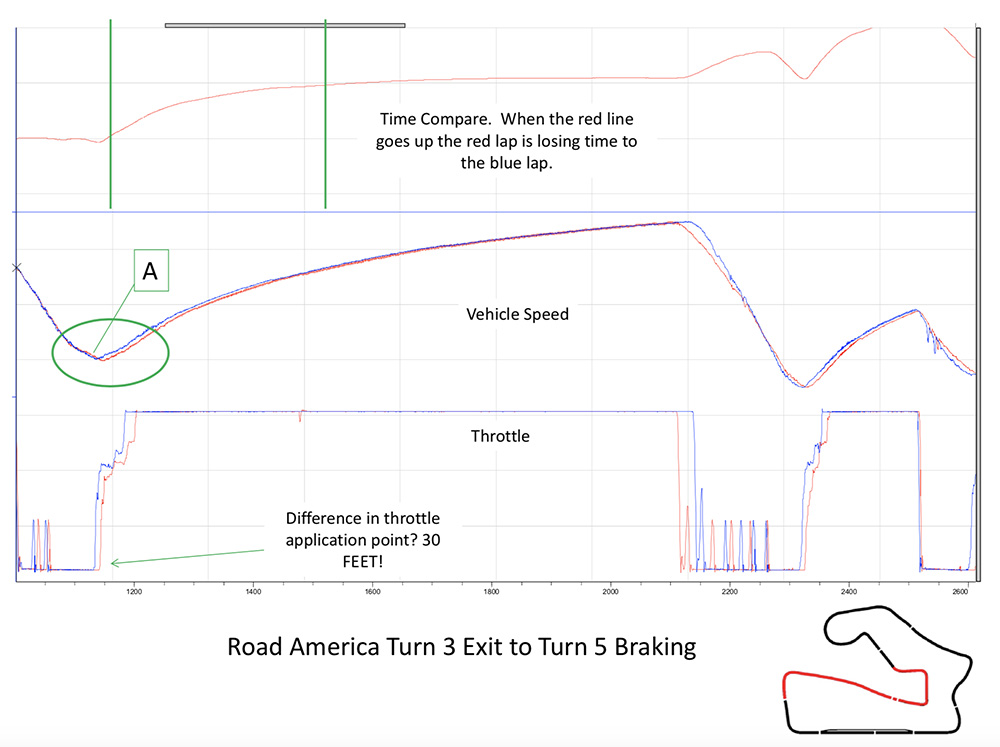
In the Road America data, label A indicates an area where the lap in red carried just a bit more speed at the apex point than the lap in blue.
This additional speed means that the driver can’t be back to the throttle as early to exit the corner.
The time lost between the two green lines on the top graph is 0.200 seconds. This is the difference between starting fifth and starting ninth using the results from 2017.
Though the time levels off a bit as both cars head down the straight, the fact remains, there is no way to recover the time lost when the blue lap applies the throttle 30 feet, or about two car lengths earlier.
The Lime Rock data shows a similar idea.
The lap in red slows down too much entering the corner (Label B).
This happens for 150 feet and results in the loss of 0.100 seconds. Label C points out that at the exit of Turn 4 the blue lap carries 1.4 mph more speed, and even though the driver is late to the throttle application, this small amount of speed-increase gains him 0.050 seconds over less than 1,000 feet.
Added up, these two losses are enough to take a car from 5th to 9th place on the grid using 2018 Lime Rock Results.
These tiny variations in performance at the shortest track on the schedule, and the longest track add up to make a big difference in performance, and on the grid.



















